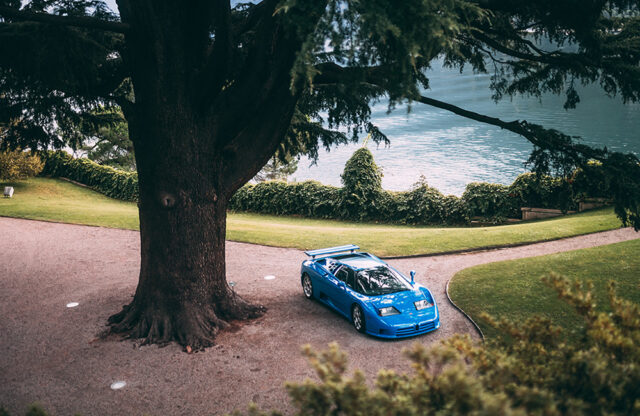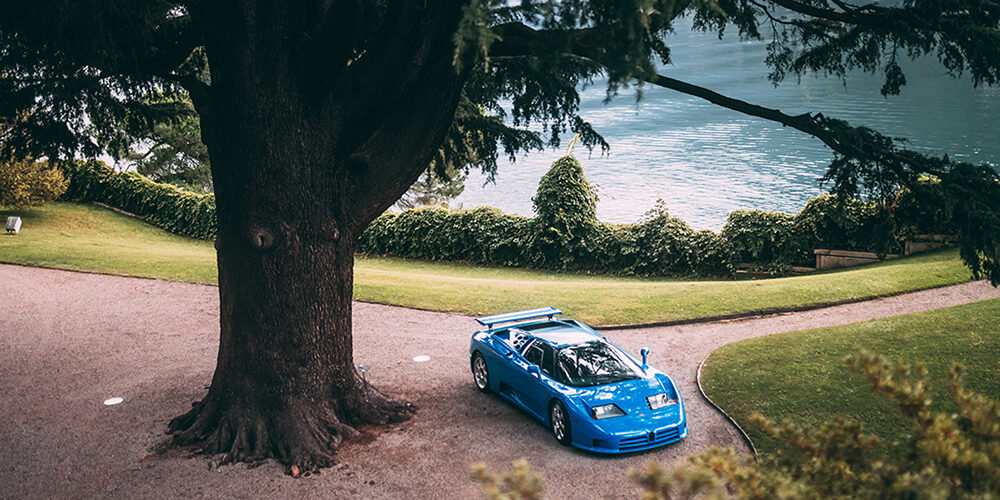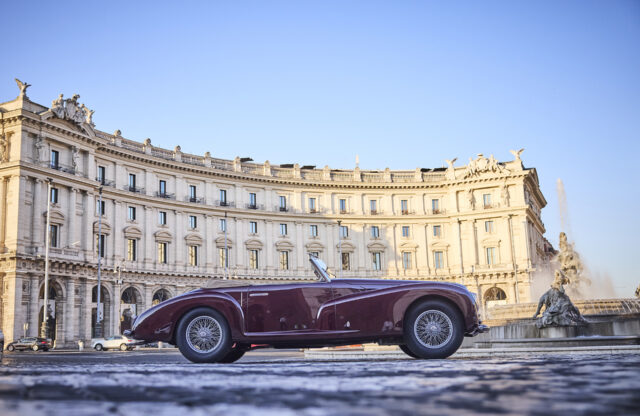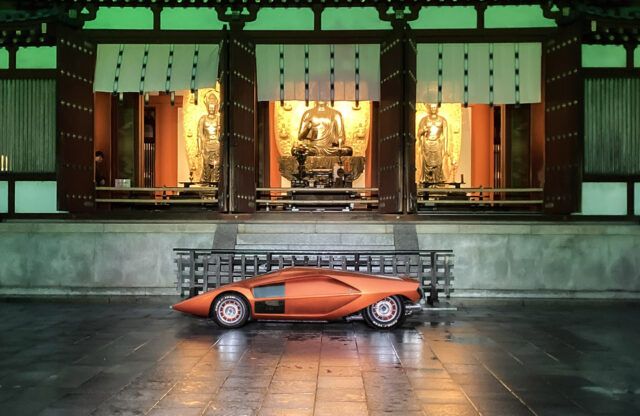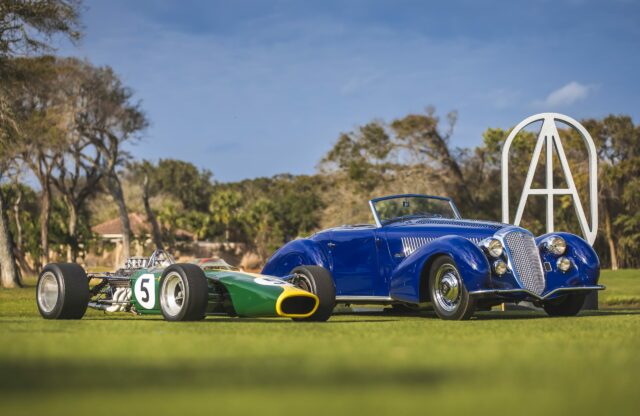We’re only a matter of weeks away from the inaugural Concours of Elegance Germany, which takes place on the shores of Lake Tegernsee on July 26-27. Focused on Gut Kaltenbrunn at the head of the lake, the event will be preceded by a tour of the finest roads and culinary treats Bavaria has to offer.
RM Sotheby’s is also hosting a 32-lot auction, and there will be a special celebration to mark 70 years of the Mercedes-Benz 300 SL Gullwing. Organised by the same team behind the London Concours and Concours of Elegance Hampton Court, as with the latter event there will also be a special Ladies’ Concours, a Junior Concours for children’s cars and ThirtyUnder30, whereby car owners younger than 30 years old can compete for a special concours prize.
However, the main stars are the cars, which run to 42 at the time of writing. We’ve picked out ten to keep an eye out for… what are you hoping to see?
1994 Bugatti EB110 America

All EB110s are special, but this particular example has a unique history. In 1994, Bugatti Automobili SpA looked to enter the North American market, with the help of the recently acquired Lotus distribution network courtesy of company head Romano Artioli. Using an SS model as its base, this prototype was created. Modifications were numerous, and included structural and impact elements, as well as the engine. The nose of the car was revised to meet safety standards, with changes to the chassis, too.
This car, chassis no. 39025, was first painted in light grey, and it was shown to the American public during the 1994 Concorso Italiano in Monterey, where it was awarded the People’s Choice trophy. At the start of 1995 it took centre stage at the Chicago Auto Show. When the EB110 came back from the US, Artioli chose to keep the car, handing it over to Zagato to repaint it in this unique hue. He retained the EB110 until 2013.
1976 Ferrari 365 GTS/4 Daytona Spyder
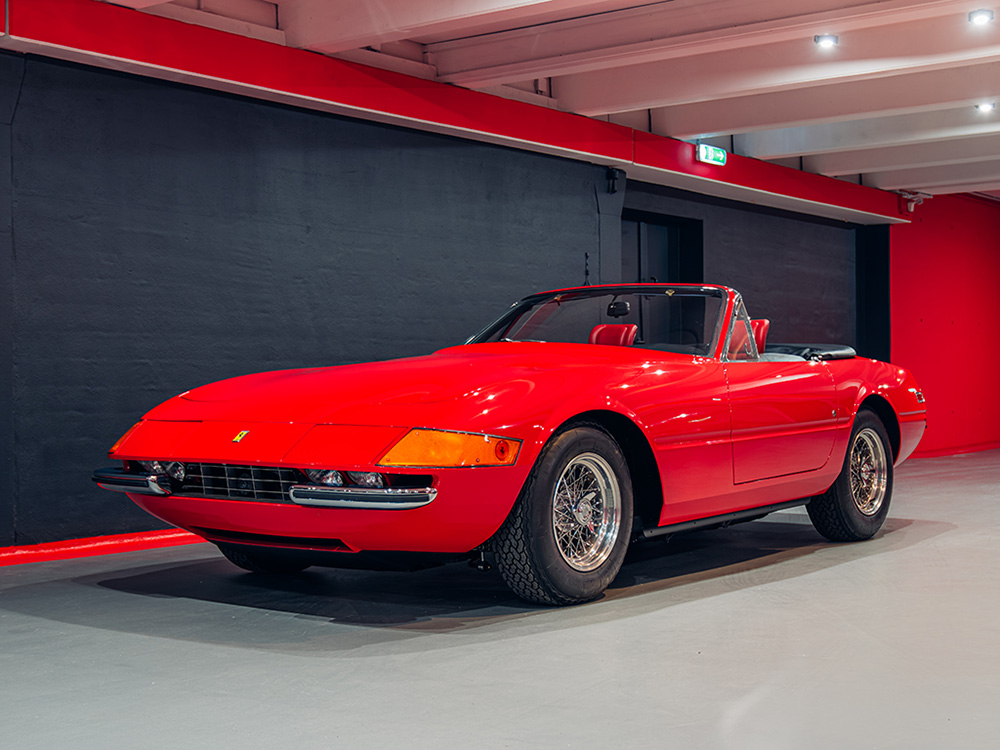
This is the very Daytona Spyder used in the 1976 Hollywood film, A Star Is Born, starring Barbra Streisand and Kris Kristofferson. It plays a critical role in one of the main dramatic scenes between the two actors, with the Ferrari ending up distinctly not as Pininfarina penned it. Despite the hopes of many Ferrari fans that the filmmakers had used replica GTS/4, it was indeed one of the 122 Spyders constructed.
Once shooting was finished, the Ferrari was acquired by the North American Racing Team – the racing team set up by Luigi Chinetti, Ferrari’s American East Coast importer. What was left was handed over to designer Giovanni Michelotti as part of a five-car run of special editions, aiming for a Turin Motor Show debut. The car was completed in time, but Michelotti died before he could see his final work on show. After many years tucked away out of sight, the car was discovered in 2012, and soon found a new owner. He sent the car to Ferrari Classiche in 2015, and its restoration began in 2017. It has now been returned to its original pre-Michelotti/NART state, and this will mark its first event post-restoration.
1983 Rolls-Royce Camargue Beau Rivage by Hooper
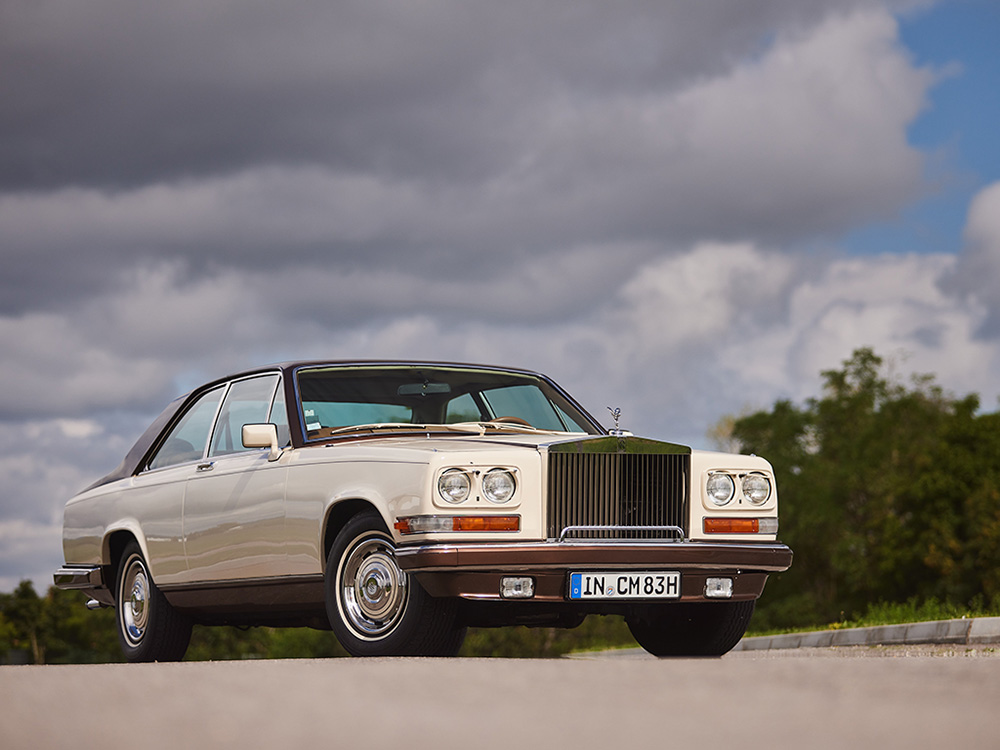
Built between 1982 and 1983, the Rolls-Royce Camargue Beau Rivage was constructed especially by Hooper for the 1983 Geneva Motor Show. Produced in collaboration with Hooper coachbuilder, the concept was to show off the maximum customisation options available. This led to the car being dubbed the world’s most expensive car, with features such as a bar with decanters, rear tables, television and video recorder with integrated controls in the armrest, sunroof, windscreen wipers and bumpers in body colour, special wooden inserts, centre console with additional displays, individual two-tone paint – and much more besides.
The car didn’t struggle to find a first owner, with a Swiss-Arab billionaire acquiring it. First registered in Geneva, the Beau Rivage was based in Cannes from 1990. Still in original condition, it retains all its Hooper equipment, and has around 57,000 km on the odometer.
1953 Ferrari 166 MM
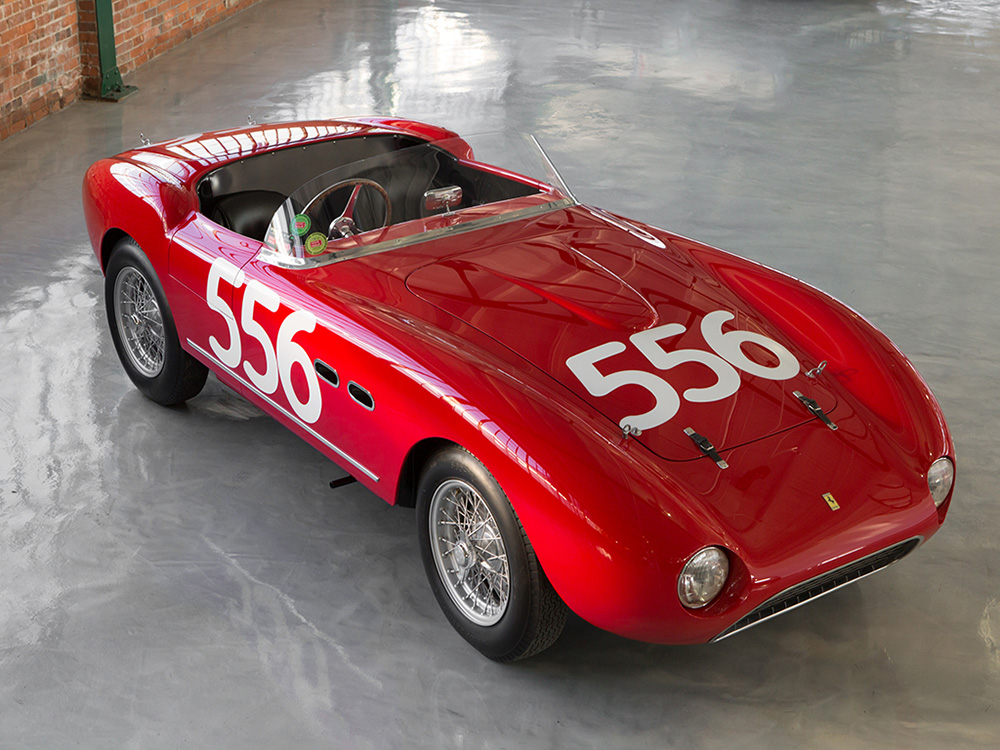
Constructed by Ferrari in early 1953, this 166 MM, chassis number 0272 M, was originally sold to Dr Alberico Cacciari of Pinnazzio di Castelfranco, Italy. The fifth of 13 166 MMs built in 1953, 0272 M displays unique spyder coachwork, but the builder responsible is a mystery. It is believed the body was designed by Aurelio Lampredi, and thought to have been built by Ferrari itself.
The 166 MM’s debut was the 1953 Giro di Sicilia. Two weeks later it took part in the Mille Miglia, wearing race number 514. At the wheel was Alberico Cacciari, alongside RH Bill Mason, father of the Pink Floyd drummer Nick Mason. At the same time, the Ferrari was also used in the production of a 1953 Shell movie about the event. The pair came home 56th overall and third in class.
For 1954, the 166 MM was acquired by its second owner, Alberto Luongo of Rome. It was raced at 1954’s Mille Miglia by Emmanuel de Graffenried and Giannino Parravicini, bearing number 556. Although the Ferrari was entered into the event under the Scuderia Ferrari banner, it was used just for the Hollywood movie The Racers, and both de Graffenried and Parravicini drove the car as stuntmen. The starring role was played by Kirk Douglas, who was victorious in the Mille Miglia as ‘Gino Borgesa’, and in the movie the car was identified as a ‘Spyder Burano’, not as a Ferrari. As a result of filming, 0272 M failed to finish the race. Much of the driving during the actual event was done by John Fitch and Douglas himself.
1982 BMW Alpina B7S Turbo
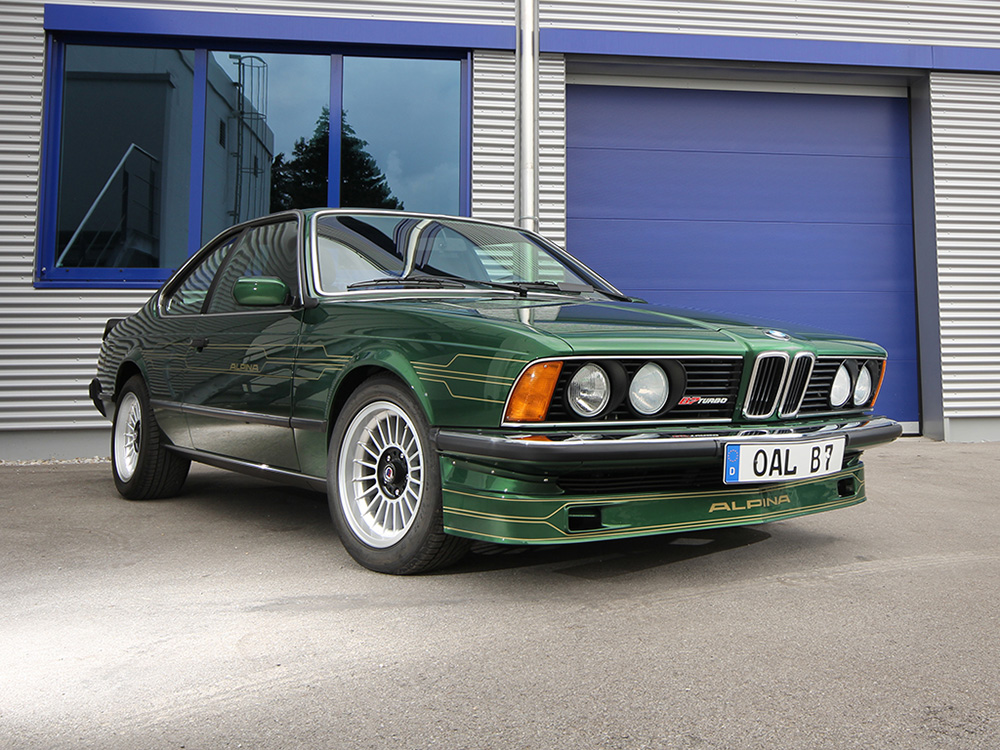
Based on the BMW 635 CSi (E24), the Alpina B7S Turbo featured a deeply modified engine, with a KKK turbocharger installed plus other refinements, including an optimised cylinder head and upgraded camshafts, valves and pistons. Just 30 units were constructed between May and September 1982, all painted in Alpina Green Metallic. The performance was a huge improvement over that of the standard BMW 635 CSi, which could muster 218bhp and 310Nm of torque.
The B7 S Turbo pushed out 330bhp and 500Nm of torque. This power not only surpassed the 286bhp of BMW’s own range-topping M635 CSi, but the B7 S Turbo was far quicker, with a 0-100km/h time of 5.8 seconds and a top speed of 262km/h. The vehicle on show at Concours of Elegance Germany is production number seven, which has been extensively restored by Alpina itself.
1975 Monteverdi Palm Beach
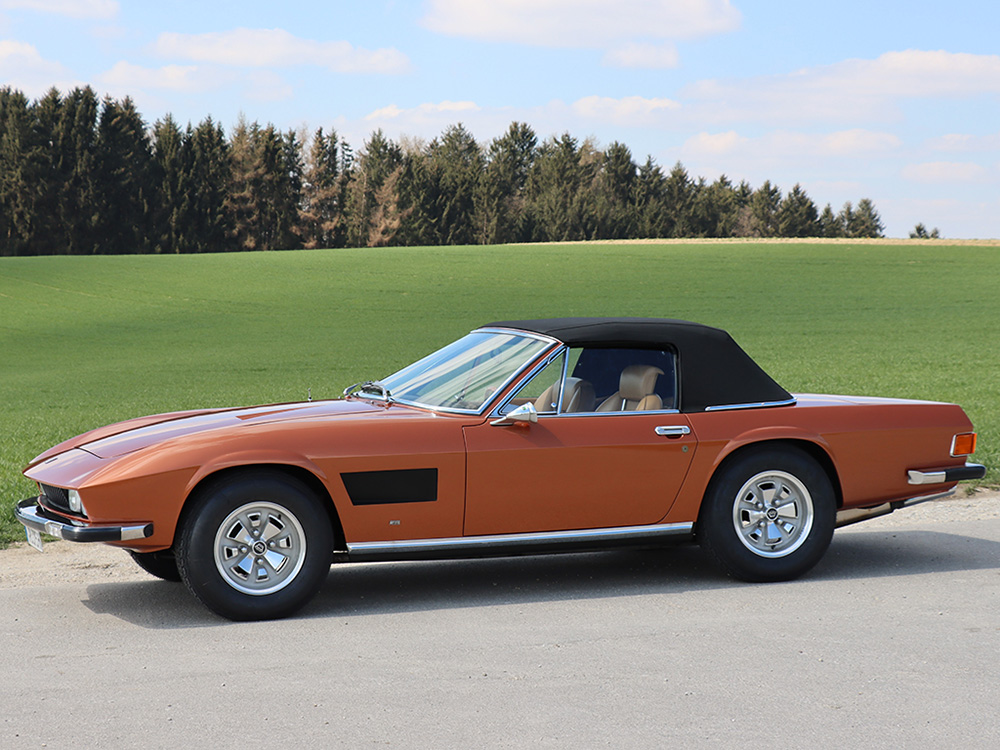
This Monteverdi is unique – it’s the only example of the Palm Beach ever constructed. Developed from one of two convertible 375 Cs constructed in 1971, it marked a steady evolution of the Monteverdi recipe. Heading further back through the model range, the 375 C was a development of the 375 S/Berlinetta, which had benefitted from a reinforced tubular frame to provide better torsional resistance.
The Palm Beach debuted at the 1975 Geneva Motor Show, showing several different styling features to the 375 C, which included alternative tail-lights, a narrow radiator grille and twin square headlamps. The car would remain a one-off, although it did make an appearance in Motor Revue magazine. Prior to 2019, the Palm Beach had remained in the hands of Peter Monteverdi’s heirs, and it was a permanent exhibit in the Monteverdi Museum in Binningen, Switzerland.
1970 Maserati Ghibli Spyder
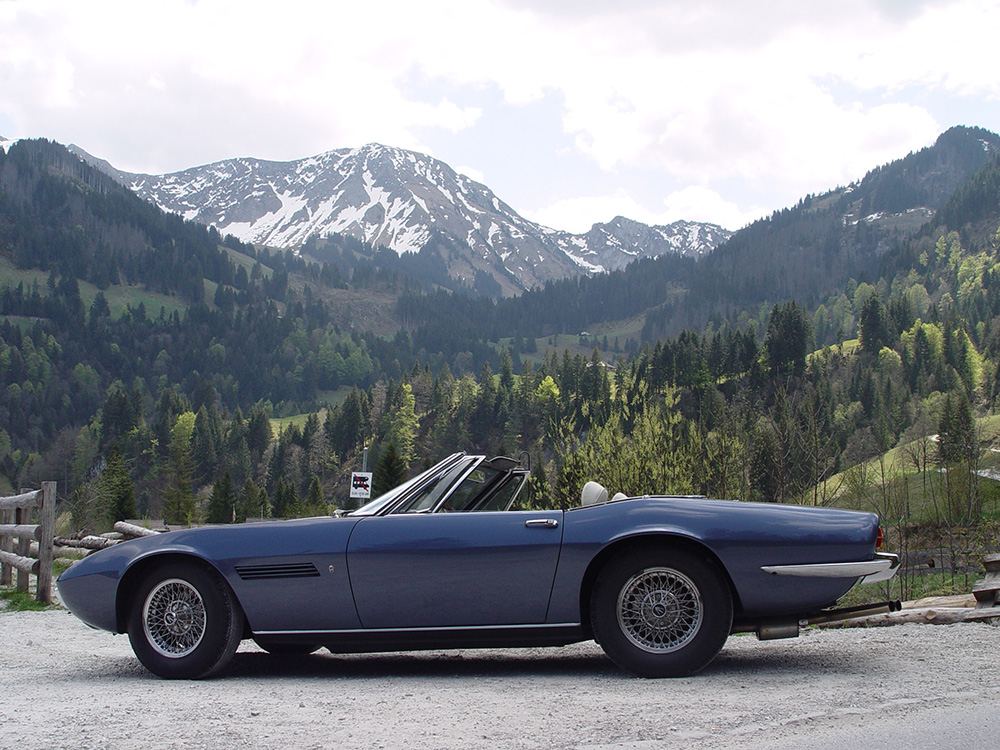
Originally ordered by the construction tycoon Thomas G Cousins, chassis 1203 – one of just 125 Maserati Ghibli Spyders built – left Genoa bound for the US in September 1970, but it would find itself used for a different type of transatlantic crossing only a few years later.
Under the direction of a Madame Conesa in the US, the Ghibli was used to carry 75kg of heroin from Le Havre to New York. Conesa was the leader of a smuggling gang, and an associate of the gangsters Claude and Maurice Schoch. Using the 1971 movie The French Connection as inspiration, the heroin was stored under the trunk cover, next to the spare tyre. Madame Conesa had previously tried to smuggle heroin into the US via drilled-out Louis XIV furniture.
It wasn’t a successful endeavour – the first canine sniffer dog to come across the car detected the package, and the US-licensed Ghibli was confiscated by French customs in 1974. A year later, the French authorities put the Maserati up for sale, and it was acquired by collector Dr Francois Jeansson. The current owner has had the car since 2006, and Concours of Elegance Germany will be the first time it has been seen in public.
1963 Mercedes-Benz 300 SL Roadster
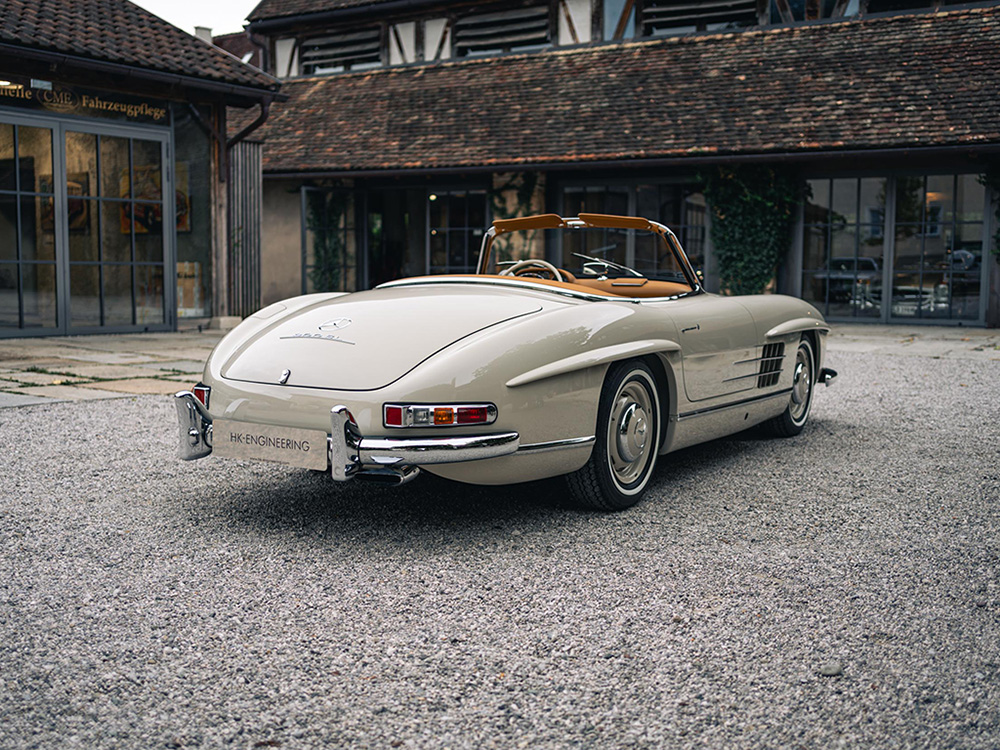
This 300 SL Roadster was originally ordered in white-grey (DB158) with natural-coloured leather interior, and is one of just 210 built with disc brakes and the lighter aluminium engine block. It’s also one of only 25 of the 210 originally delivered to Germany. Since 1977, the 300 SL has had only three owners, with the roadster last remaining in the same hands for over 25 years. This owner had the car fully restored in 1997-98 by the company Klatt Oldtimer in Schneverdingen, and then stored it until the current owner was able to acquire it in 2022.
Between 1990 and 1997, the roadster belonged to the German entrepreneur Louis Krages, the third generation to run a very successful timber trading company in Bremen. However, he became famous as a racing driver under the pseudonym John Winter. He adopted this name because he didn’t want his mother to find out about his dangerous and very expensive racing career.
He started racing nationally in the 1970s, but would eventually celebrate international successes in the 1980s. He himself was responsible for ending the game of hide-and-seek in 1985 when he won the Le Mans 24 Hours together with Klaus Ludwig and Paolo Barilla. After this victory, the truth could no longer be hidden – his face was on the cover of newspapers back home.
With a victory in the Daytona 24 Hours in 1991, Krages is one of only very few drivers to have won both 24-hour endurance classics. His career as a racing driver came to an end when his company in Bremen slipped into the red and he had to cover this development with his private assets. He emigrated to Atlanta in the US without much money, and tried to build a new life there. However, he tragically took his own life in 2001.
In 2022, the 300 SL was acquired by the current owner, and HK Engineering was commissioned to carry out a complete overhaul of the technology and restore the roadster to its original colour combination.
1968 Alfa Romeo 33/2 Daytona Coupé
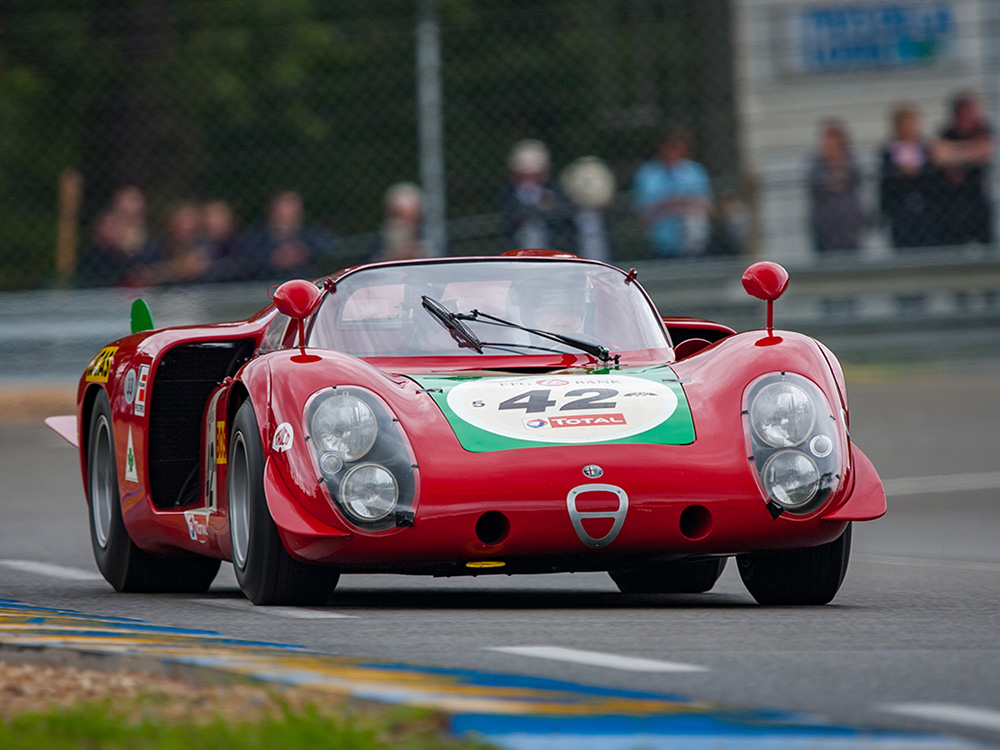
This Alfa Romeo 33/2, chassis 75.033.017, was intended to be Ignacio Giunti and Nanni Galli’s mount for the 1968 Daytona 24 Hours, but it couldn’t take the start of the race. However, the pair soon became the duo to beat in its class in endurance racing that year, taking home class victories on the Targa Florio, Nürburgring 1000km, Imola 500km and Le Mans 24 Hours. Along the way, they claimed overall podiums at Imola and the Targa Florio. In the following season, Giunti and Galli used the car in the Targa Florio and Nürburgring 1000 km, but unfortunately were unable to see the chequered flag in either race.
Following its career as a Works racing car, the 33/2 was purchased by Rafielli, a French collector, in the early 1970s. The car spent the next 35 years on display at the Musée de l’Automobile in Mogens, southern France. Greg Whitten later acquired the car via California dealer Mark Ketcham, and restored the car. It’s been in the collection of the current owner since 2010.
1953 Aston Martin DB3/5
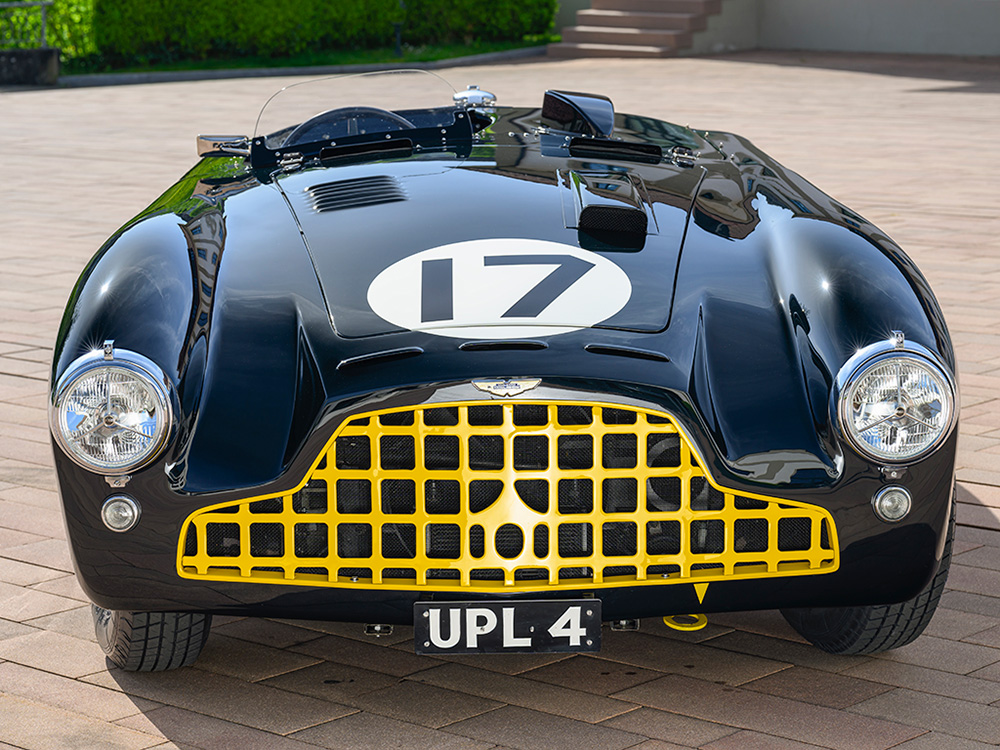
This DB3/5, is one of three remaining former factory team vehicles out of the five built. Its racing history includes outings at Silverstone, Monaco, the Le Mans 24 Hours and Sebring, where the car achieved second overall and a class win in 1953, and also to the Mille Miglia in 1953 with start number 612. Its greatest success was its first-place finish ahead of two Ferrari 225S cars at the Goodwood Nine Hours race on August 16, 1952, with Peter Collins and Pat Griffith at the wheel.
This race was the first ‘day and night’ race to be run in the UK after World War Two. The British Automobile Racing Club hoped to emulate the commercial success of Le Mans. In more recent times, the car has been a regular participant in Historic races at the Goodwood Revival, the Spa Six Hours and the Monaco Historique.
For more information on Concours of Elegance Germany, head here.
